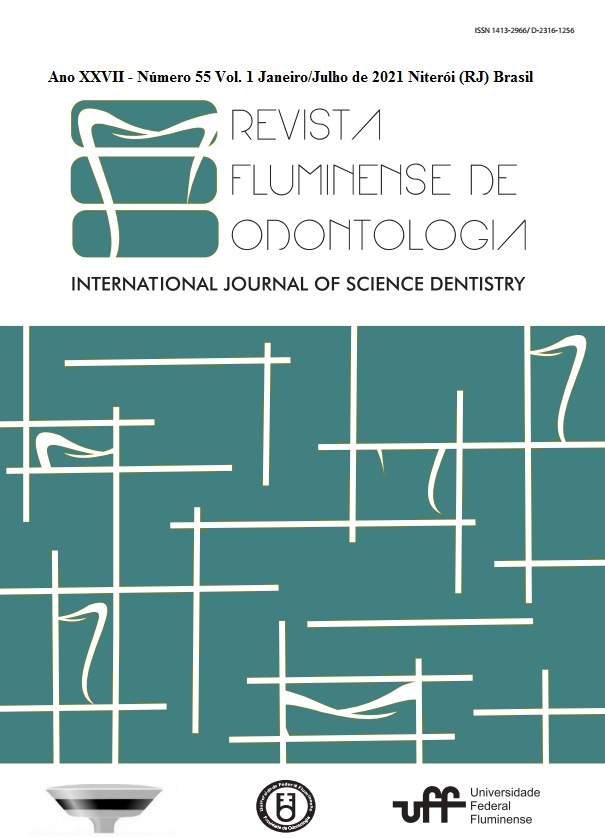A FOTOPOLIMERIZAÇÃO DE COMPÓSITOS ODONTOLÓGICOS ALÉM DA POTÊNCIA LUMINOSA
DOI:
https://doi.org/10.22409/ijosd.v0i55.43133Abstract
O objetivo deste estudo foi mostrar que a potência da luz das unidades de fotopolimerização (LED) não é a única ou a propriedade mais importante para uma polimerização satisfatória de compósitos dentários. A distribuição regular e o ângulo de incidência dos raios de luz também são igualmente responsáveis por uma polimerização mais completa e profunda. Esta revisão de literatura mostra que avançamos o suficiente na potência da luz emitida pelos LEDs, mas no que diz respeito à regularidade e ângulo dos raios emitidos, ainda temos muito a avançar. Novos compósitos com cargas reflexivas e preocupações com a diferença de índice de refração entre as cargas e a matriz são importantes para melhorar essa polimerização, mas os LEDs com vários comprimentos de onda podem complicar ainda mais a distribuição regular dos raios de luz emitidos. Dispositivos com diferentes LEDs emitindo raios de luz com diferentes comprimentos de onda não distribuem essas ondas no modo regular. Portanto, parte da restauração pode estar sub polimerizada, tornando-se menos resistente aos esforços mastigatórios e à infiltração. O estudo também relembra propostas de avaliação científica dessa distribuição regular e conclui que os LEDs modernos emitem raios de luz com grande potência e irradiância, mas ainda são irregulares na distribuição dos raios de luz emitidos.
Palavras-chave: fotopolimerização, conprimento de onda, irradiância, resina composta.
PHOTOPOLIMERIZATION OF DENTAL COMPOSITES BEYOND THE LIGHT POWER EMITED BY LED LIGHT CURING UNITS
ABSTRACT:
The objective of this study was to show that light power of light curing units (LCU) is not the only or the most important property for a satisfactory polymerization of dental composites. Regular distribution and angle of incidence of the light rays are also equally responsible for a fuller and deeper polymerization. This literature review shows that we advanced enough in the power of light emitted by LCUs, but as regards the regularity and angle of the emitted rays, we still have much to advance. New composites with reflective fillers and concerns about the difference of refractive index between the fillers and the matrixare important help to improve this polymerization, but LCUs with several wavelengths can further complicate the regular distribution of emitted light rays. Devices with different LEDs emitting light rays with different wavelengths does not distribute these waves in a regular mode. Therefore, part of the restoration can be under polymerized, becoming less resistant to masticatory efforts and infiltration as well. The study also recalls proposals for scientific evaluation of this regular distribution and concludes that modern LCUs emit light rays with great power and irradiance, but are still irregular in the distribution of emitted light rays.
Keywords: photopolymerization, wavelength, Irradiance, composite.


